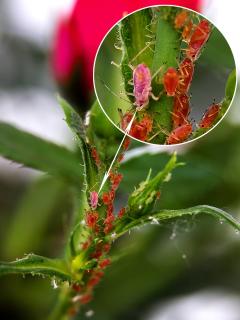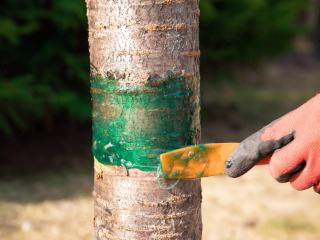

Many natural pest control methods exist for the garden but have somewhat fallen into disuse with the rise of chemical products. Now, recent bans on use of pesticides for individuals in some cities are leading to many advances in natural protections. Growing aids, ready-to-use compost teas, and common products like talc, fructose and soap instill the idea that it is possible and easy to cultivate gardens without fearing for our health.
Provide good soil, rich and fertile. Soil is the first thing to consider. It’s not just a medium for plants to grow, but a true living factory made up of billions of organisms. Worms, insects, fungi, bacteria, algae, etc., work in synergy to build up quality soil. Any imbalance weakens plants and may lead to a pest invasion. Organisms in the soil play a key role in maintaining plant health. Think about favoring them by regularly feeding your garden with compost, plant waste, manure, weedy tea, and organic fertilizers. Their work gradually transforms organic matter into mineral matter that plants can use.
Rock powders with high magnesium (Mg) content such as zeolite, dolomite, basalt, or marine algae strengthen the immune system of all living organisms. The more wildlife in the garden, such as birds, amphibians, hedgehogs, and insects, the more helpers there are to control pests in the garden. These unfortunately are direct victims of chemical treatments, yet another reason to avoid them.
 Regularly monitor tips of shoots and the underside of leaves to detect pest presence. Act at the onset of attack with a hose and nozzle jet or with a solution of soapy water (a tablespoon of black soap per quart). Hot water, provided it does not exceed 104°F (40°C), also has a repellent action on these pests. Also try preparing an onion peel infusion or a garlic decoction, macerated for 24 hours in boiled water or use plant compost teas. Compost teas of nettle, ferns, horsetails, etc. are even sold ready-to-use in garden stores!
Regularly monitor tips of shoots and the underside of leaves to detect pest presence. Act at the onset of attack with a hose and nozzle jet or with a solution of soapy water (a tablespoon of black soap per quart). Hot water, provided it does not exceed 104°F (40°C), also has a repellent action on these pests. Also try preparing an onion peel infusion or a garlic decoction, macerated for 24 hours in boiled water or use plant compost teas. Compost teas of nettle, ferns, horsetails, etc. are even sold ready-to-use in garden stores!
To go further:
Fruit trees often fall prey to worms, aphids, caterpillars, and other pest insects that force your hand regarding tree treatment. The challenge lies in acting before the pest has entered the fruit. Thus, it’s appropriate to intervene from the springtime onward:
 Place glue rings about 4 inches wide (10 cm) on the trunk (anti-ant collars, a pasty spread, or sticky bands). These primarily work against ants, which encourage aphid infestations. They also stop caterpillars that crawl up trunks and other climbing insects.
Place glue rings about 4 inches wide (10 cm) on the trunk (anti-ant collars, a pasty spread, or sticky bands). These primarily work against ants, which encourage aphid infestations. They also stop caterpillars that crawl up trunks and other climbing insects.Pheromone traps provide an effective way to trap pests once you know which one to target. They work by luring insects into a water bath to drown it, or by trapping it in sticky material (Delta trap).
Read: Pheromone traps: uses in the vegetable patch and ornamental garden
Soak 2.6 ounces per quart for fresh leaves (75 g/L) or 0.5 ounce per quart for dry leaves (15 g/L) for 3-4 days at 68°F (20°C) in drinking water. Filter the plant material out (compost it) and dilute the filtrate in 5 times its volume in drinking water (dilution by 6).
Source: http://substances.itab.asso.fr/wp-content/uploads/2018/08/urtica.pdf